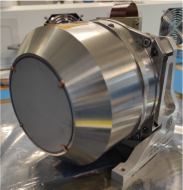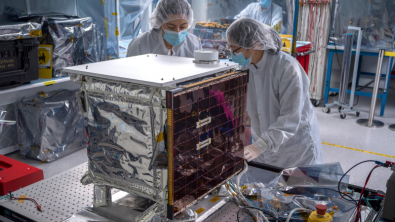
CAD view of the Seismobox
As part of a payload called the Farside Seismic Suite (FSS), recently assembled at NASA's Jet Propulsion Laboratory (JPL) in Southern California, two seismometers are expected to be delivered in 2026 to the Schrödinger Crater on the far side of the Moon.
The smallest seismometer in the suite, called the Short Period sensor (SP), was built by Kinemetrics in Pasadena, California, in collaboration with the University of Oxford and Imperial College London.
The vertical Very Broad Band Seismometer, or VBB (Very Broad Band), is the most sensitive flight-ready seismometer ever built. It is able to detect the close movement of a single hydrogen atom. It is a large cylinder about 14 centimeters in diameter that measures up and down movements using a pendulum held in place by a spring.
It was on this second seismometer that the APC mechanics team worked between end of 2021 and early 2023, the date of delivery of the flight model to JPL. Its integration after the vibration and thermal vacuum tests is a success.
The APC mechanics team took over, in particular, the mechanical design of the VBB, in collaboration with the IPGP and Supaero to meet the following environmental requirements specific to the lunar environment:
- Dust: encapsulation of the seismometer in a titanium cover, custom joints, sintered titanium filter as a vent
- Radiation: Mu-metal shielding
- Thermal: thermoelastic separation of the seismometer supports by installing deformable wedges.
- Integration in a restricted environment on FSS
The APC mechanics team that contributed to this project is composed of:
Kévin Biernacki
Stéphane Dheilly
Alain Givaudan
Maurice Karakac
Read CNES press review here (in French)
Services/Groupes:
- Mécanique
Objet de la publication:
Faits marquants projets





